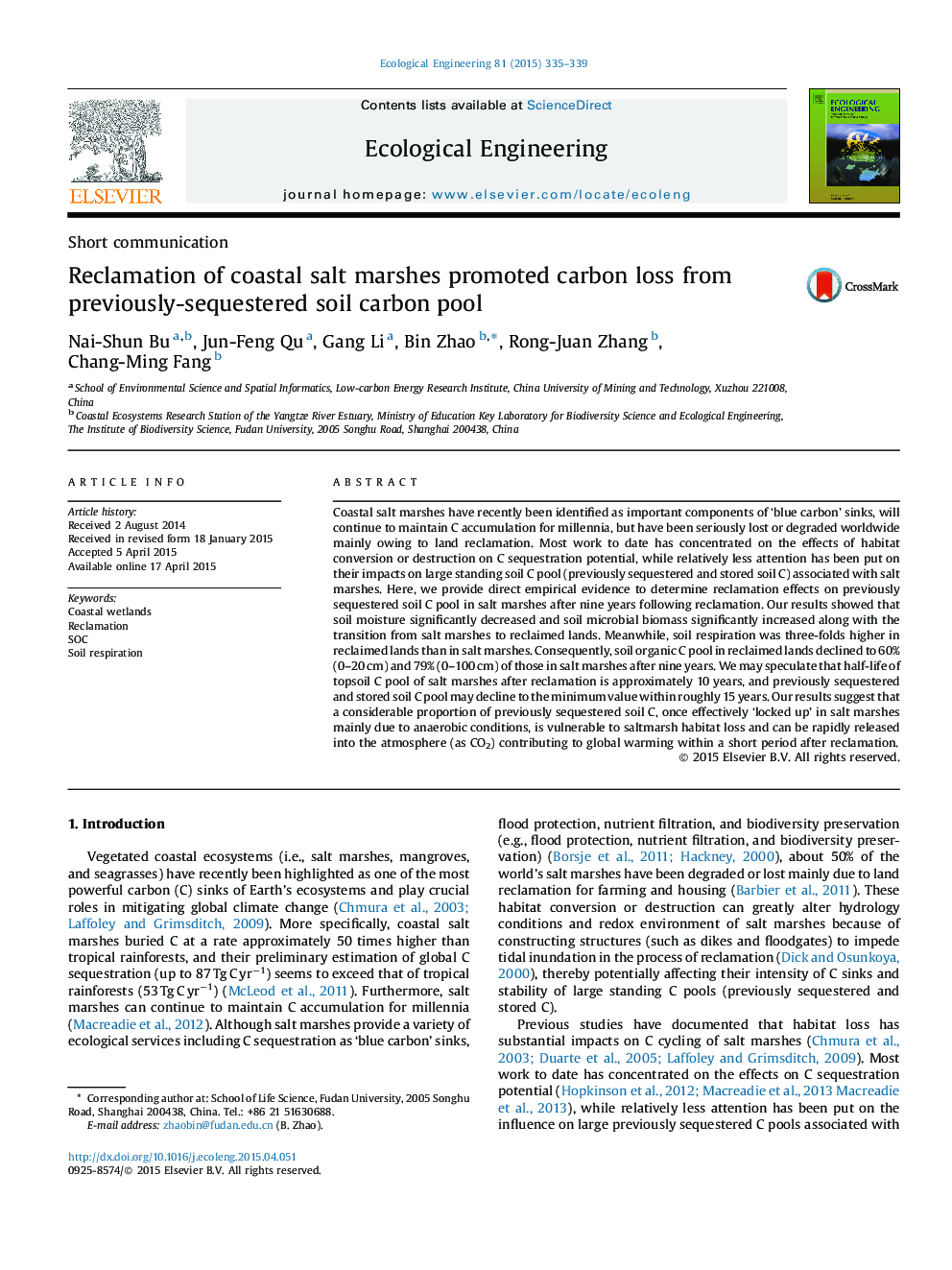| Article ID | Journal | Published Year | Pages | File Type |
|---|---|---|---|---|
| 4389090 | Ecological Engineering | 2015 | 5 Pages |
•The study area is ideal for studying the effect of reclamation on salt marshes.•Soil microbial biomass and respiration significantly increased along with the shifting from ‘undisturbed’ salt marshes to reclaimed lands.•Provide a direct evidence to quantify the loss of previously-sequestered soil carbon follow reclamation within a short and specific time.•Imply crucially insightful implications for encouraging sustainable management, restoration and utilization of coastal salt marshes.
Coastal salt marshes have recently been identified as important components of ‘blue carbon’ sinks, will continue to maintain C accumulation for millennia, but have been seriously lost or degraded worldwide mainly owing to land reclamation. Most work to date has concentrated on the effects of habitat conversion or destruction on C sequestration potential, while relatively less attention has been put on their impacts on large standing soil C pool (previously sequestered and stored soil C) associated with salt marshes. Here, we provide direct empirical evidence to determine reclamation effects on previously sequestered soil C pool in salt marshes after nine years following reclamation. Our results showed that soil moisture significantly decreased and soil microbial biomass significantly increased along with the transition from salt marshes to reclaimed lands. Meanwhile, soil respiration was three-folds higher in reclaimed lands than in salt marshes. Consequently, soil organic C pool in reclaimed lands declined to 60% (0–20 cm) and 79% (0–100 cm) of those in salt marshes after nine years. We may speculate that half-life of topsoil C pool of salt marshes after reclamation is approximately 10 years, and previously sequestered and stored soil C pool may decline to the minimum value within roughly 15 years. Our results suggest that a considerable proportion of previously sequestered soil C, once effectively ‘locked up’ in salt marshes mainly due to anaerobic conditions, is vulnerable to saltmarsh habitat loss and can be rapidly released into the atmosphere (as CO2) contributing to global warming within a short period after reclamation.
